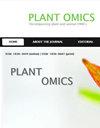长叶Heliopsis根与叶的从头转录组测序、组装和表征,以发现参与特殊代谢产物生物合成的假定基因
Q3 Agricultural and Biological Sciences
引用次数: 0
摘要
Heliopsis longipes是一种有价值的特殊代谢物(或次生代谢物)来源,主要在根中具有药用特性。然而,由于缺乏基因组或转录组资源,人们对参与这些代谢物生物合成的基因知之甚少。本研究利用Illumina配对端测序平台,通过从头RNA测序(RNA- seq),研究了长叶红根和叶中特化代谢生物合成途径的基因。使用Newbler软件重新组装转录组后,共获得172,342个非冗余转录本,N50值为816 bp。通过基因本体(GO)、BLAST2GO、京都基因与基因组百科全书(KEGG)和KEGG自动注释服务器(KAAS)的进一步功能分类和注释,发现组织中的活性基因主要参与代谢过程和特殊代谢途径的生物合成。采用Cuffdiff软件对根与叶的差异表达进行分析(p值≤0.05,对数倍变化比(log2)≥1),结果表明差异表达基因(deg)具有器官特异性,在叶片中,deg在光合作用中显著富集,而在根中,deg在植物激素信号转导中富集程度更高。63个转录物deg与9个特殊代谢途径相关,在根中含量最多的是类苯丙烷生物合成途径,在叶中含量最多的是类胡萝卜素生物合成途径。发现了几个调控基因,包括碱性-螺旋-环-螺旋和碱性亮氨酸拉链结构域,转录因子家族分别参与调节苯丙素和类胡萝卜素的生物合成。本研究建立了长猿全球转录组数据集。数据将对研究该物种的功能基因组学或基因工程有用。这些结果将促进对长柄海参特化代谢物生物合成的遗传机制的理解本文章由计算机程序翻译,如有差异,请以英文原文为准。
De novo transcriptome sequencing, assembly and characterization of Heliopsis longipes roots vs. leaves to discover putative genes involved in specialized metabolites biosynthesis
Heliopsis longipes is a valuable source of specialized metabolites (or secondary metabolites) with medicinal properties mainly in roots. However, little is known about genes involved in the biosynthesis of these metabolites, primarily due to the lack of genome or transcriptome resources. In this work, the genes of the biosynthetic pathway of the specialized metabolism from H. longipes roots and leaves through de novo RNA sequencing (RNA-Seq) using the platform of Illumina paired-end sequencing were studied. After de novo transcriptome assembly using the software Newbler, a total of 172,342 non-redundant transcripts with an N50 value of 816 bp was obtained. Further functional classification and annotation with Gene Ontology (GO), BLAST2GO, Kyoto Encyclopedia of Genes and Genome (KEGG), and KEGG automatic annotation server (KAAS), revealed that active genes in tissues are predominately involved in the metabolic process and biosynthesis of specialized metabolite pathways. Differential expression analysis of roots vs. leaves using Cuffdiff software (p-value ≤0.05 and log-fold change ratio (log2) ≥1) revealed that differentially expressed genes (DEGs) were in an organ-specific manner, such as in leaf, DEGs were significantly enriched in photosynthesis, while in roots, were a higher enriched function of plant hormone signal transduction. A total of 63 transcripts DEGs were related to 9 specialized metabolites pathways, in roots the most abundant was the phenylpropanoid biosynthesis, and in leaves was the carotenoids biosynthesis. Several regulatory genes including the basic-helix-loop-helix and basic leucine zipper domain, transcriptions factor families involved in the regulation of phenylpropanoids and carotenoid biosynthesis, respectively, were discovered. This study established a global transcriptome dataset for H. longipes. Data shall be useful to study the functional genomics or genetic engineering of this specie. These results will promote the understanding of the genetic mechanism involved in the biosynthesis of specialized metabolites in H. longipes
求助全文
通过发布文献求助,成功后即可免费获取论文全文。
去求助
来源期刊

Plant Omics
生物-植物科学
CiteScore
1.30
自引率
0.00%
发文量
0
审稿时长
6 months
期刊介绍:
Plant OMICS is an international, peer-reviewed publication that gathers and disseminates fundamental and applied knowledge in almost all area of molecular plant and animal biology, particularly OMICS-es including:
Coverage extends to the most corners of plant and animal biology, including molecular biology, genetics, functional and non-functional molecular breeding and physiology, developmental biology, and new technologies such as vaccines. This journal also covers the combination of many areas of molecular plant and animal biology. Plant Omics is also exteremely interested in molecular aspects of stress biology in plants and animals, including molecular physiology.
 求助内容:
求助内容: 应助结果提醒方式:
应助结果提醒方式:


